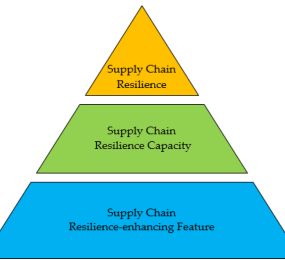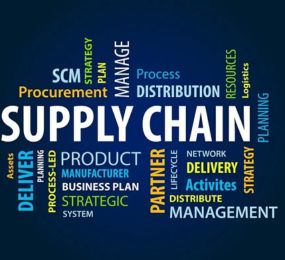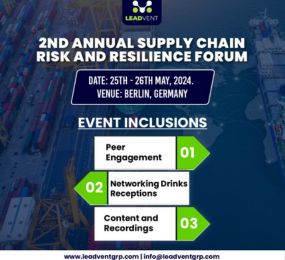Global Supply Chain Risks in 2025
A new wave of risks is constantly connected with the evolution of the global supply chain landscape. Today, it is no longer geopolitics that poses the most threats to a company's supply chain – this is no longer the case. To survive another 5 years Shopeefied, businesses need to pay extra attention to supply chain risk management, third-party risk management and, of course, homework that minimises the threats.
The Changing Face of Supply Chain Risks
The uncertainty in the economy, technological changes, and climate change will also continue to have an influence on supply chains, albeit somewhat tempered by 2025. The Gartner report says that 89 per cent of supply chain professionals believe that there needs to be a higher emphasis on risk management.
Key risks include:
- Cybersecurity Threats: In light of digital transformation reaching its peak, the number of cyberattacks on supply chains is expected to grow Thirty Percent. Ransomware, phishing and data breaches on suppliers can manifest in widespread disruption.
- Geopolitical Instability: Companies are having to reconfigure sourcing strategy according to trade wars, sanctions and regional conflicts. Other geopolitical tensions are predicted to cut global trade growth by 2.5% in 2025 according to the World Bank.
- Climate Disruptions: Climate change is bringing natural disasters to become more frequent. In 2023, $300 billion worth of damages were caused by extreme weather events on supply chains, and these are just expected to increase in 2024.
- Third-party Vulnerabilities: The network of external suppliers that many companies depend on is very long. Without proper third-party risk management, businesses lose potential revenue, damage their reputations and have to skip overproduction due to downtime.
Supply Chain Failures and Pursues
Case Study 1: Cyberattack Fallout
A ransomware attack which forced a company to shut down its production line caused the Chicago-based company in question a $400 million loss. It was traced to an unsecured supplier network. This incident is another case pointing to the necessity of having end-to-end cybersecurity measures and third-party risk assessments.
Case Study 2: Geopolitical Shift Adaptation
A leading electronics company diversified its supplier base across three continents in response to sanctions cutting key suppliers. By adopting this strategy, it secured its production line and disrupted the least, confirming the importance of agile supplier relationships.
Case Study 3: Sustainability and Climate Resilience
One such company, known as a food and beverage company, tackled this by revamping its supply chain to obtain its ingredients from climate-resilient areas. It began lessening disruptions associated with climate by 25 per cent and already improved delivery times. The value of sustainability in risk management is well demonstrated by this proactive approach.
Strengthening Supply Chain Risk Management
A resilient supply chain requires a multi-layered approach to risk management from a business. Key strategies include:
- Risk Identification and Assessment: Understand the risks with respect to your entire supply chain to pin down specific vulnerabilities.
- Cyber Resilience: Put in place cybersecurity protocols like regular audits, third-party vetting, and advanced threat detection.
- Diversification: Always do not rely on just one supplier and/or region. Reduce exposure by using multiple source material sources.
- Real-time Monitoring: Use IoT-based tracking, environmental and disruption monitoring for shipping.
- Third-party Risk Management: They require the vet suppliers to go through them thoroughly and be transparent.
Leadvent’s Supply Chain Management Conference
The Supply Chain Management Conference by Leadvent is for supply chain professionals from different categories who seek to know more about the industry's emergent risks and strategies.
Reason to Attend Leadvent’s Supply Chain Management Conference
- Industry-leading Speakers: Get insights from experts from the top places in supply chain risk management, third-party risk management and resilience planning.
- Interactive Workshops: You will participate in hands-on sessions on cybersecurity, sustainability and operational agility.
- Real-world Case Studies: Get insights from companies that succeeded in mitigating risks and rewriting their supply chain.
- Networking Opportunities: Interact with business industry leaders, tech innovators as well as other professionals to share ideas, concepts and strategies.
Secure Your Possession: Building the Tomorrow of Supply Chains
Be in the know, and be ahead of the curve in protecting your enterprise from new and emerging risks, for the global landscape of supply chains is changing faster than ever. The Leadvent Supply Chain Management Conference is the actual entryway into mastering supply chain resilience in 2025.
Conclusion
As we near 2025, supply-chain risks continue to evolve, making supply-chain risk management and third-party risk management essential. Cyber threats, geopolitical instability, and regulatory changes demand that we think ahead to protect supply chains. Companies that blend their risk assessment framework with cybersecurity investment and clever solutions will be in front of any disruptions.
The Supply Chain Management Conference is the first step in overcoming these challenges. Register now – save your supply chain for the future!
FAQs
1. Which is the biggest supply chain risk in 2025?
There is increasing digitalisation and connected supply chains, which make cyberattacks the most imminent threat.
2. What is the capacity of supply chain resilience when moderated by third-party risk management?
It is done by evaluating and monitoring suppliers’ financial stability, cybersecurity posture and operational stability, which helps companies avoid disruptions and continuity.
3. What benefit can any company hope to get from Leadvent’s conference in preparing for 2025?
It presents business expert knowledge, actionable strategies and worthwhile network possibilities to ensure that businesses can remain in a position to stay resilient and competitive.
















